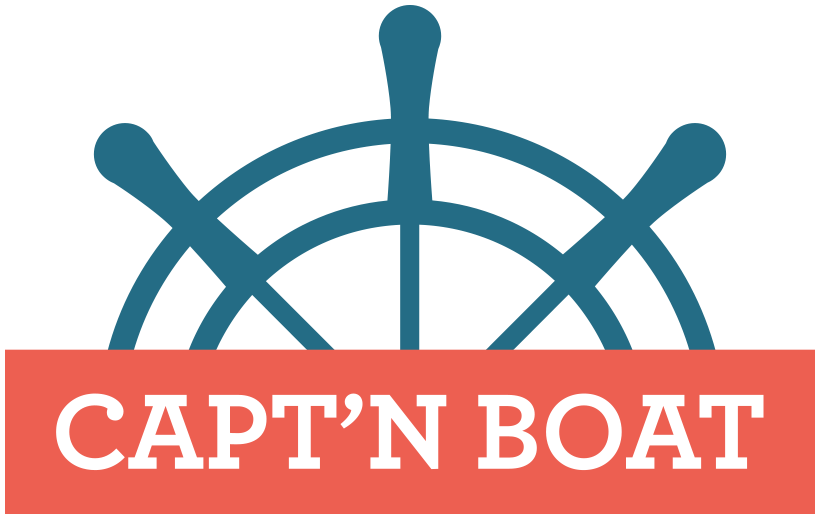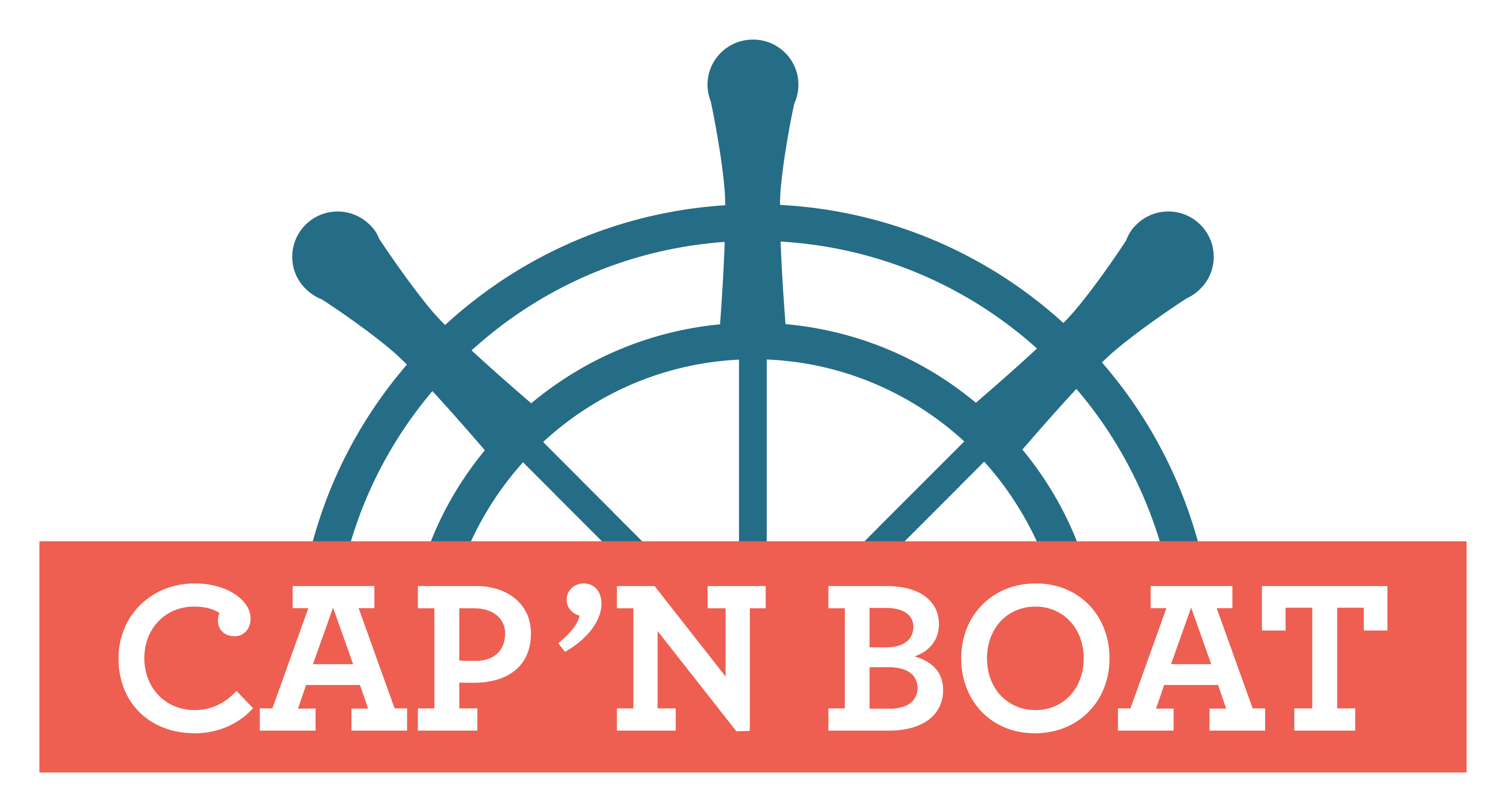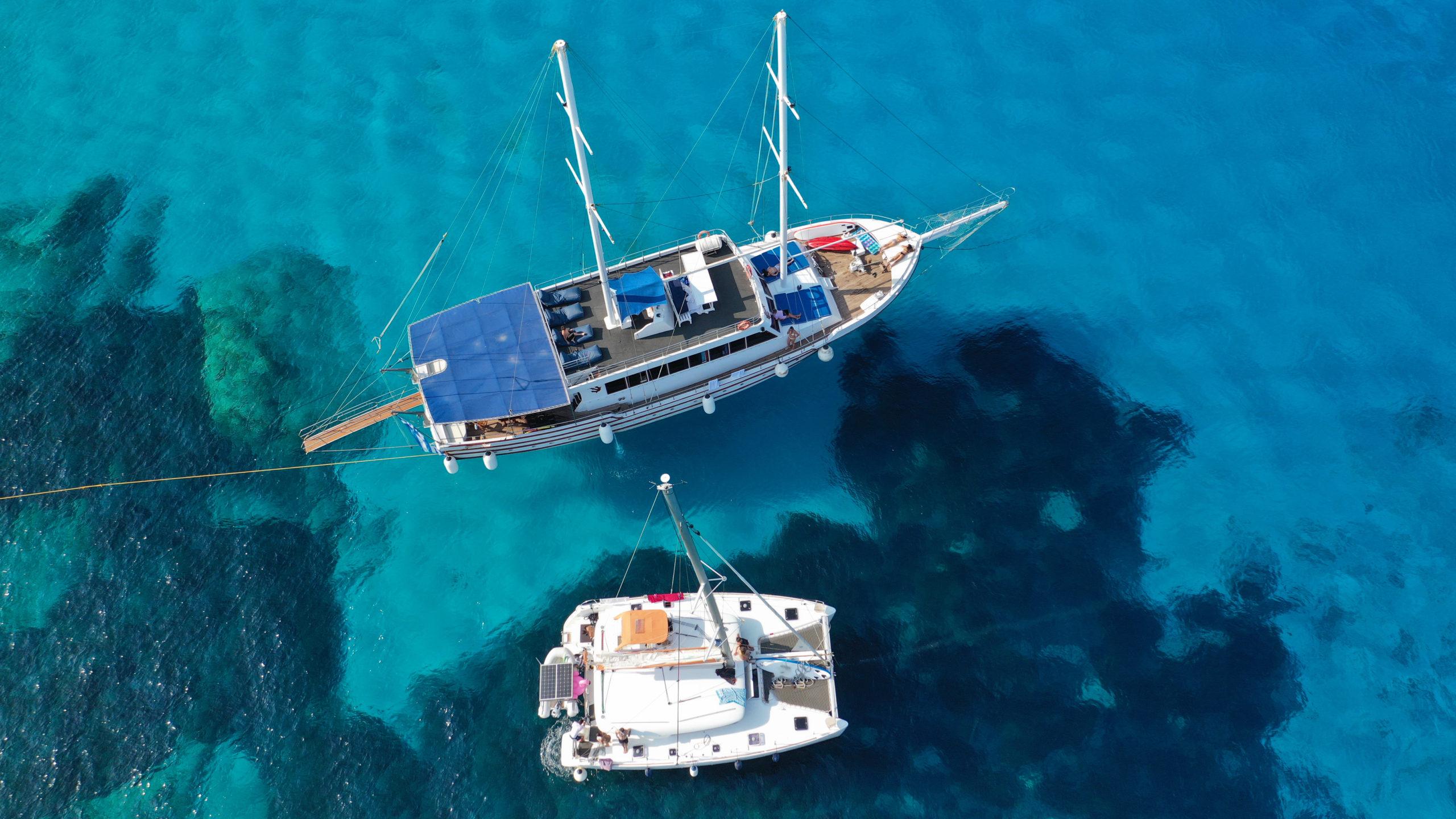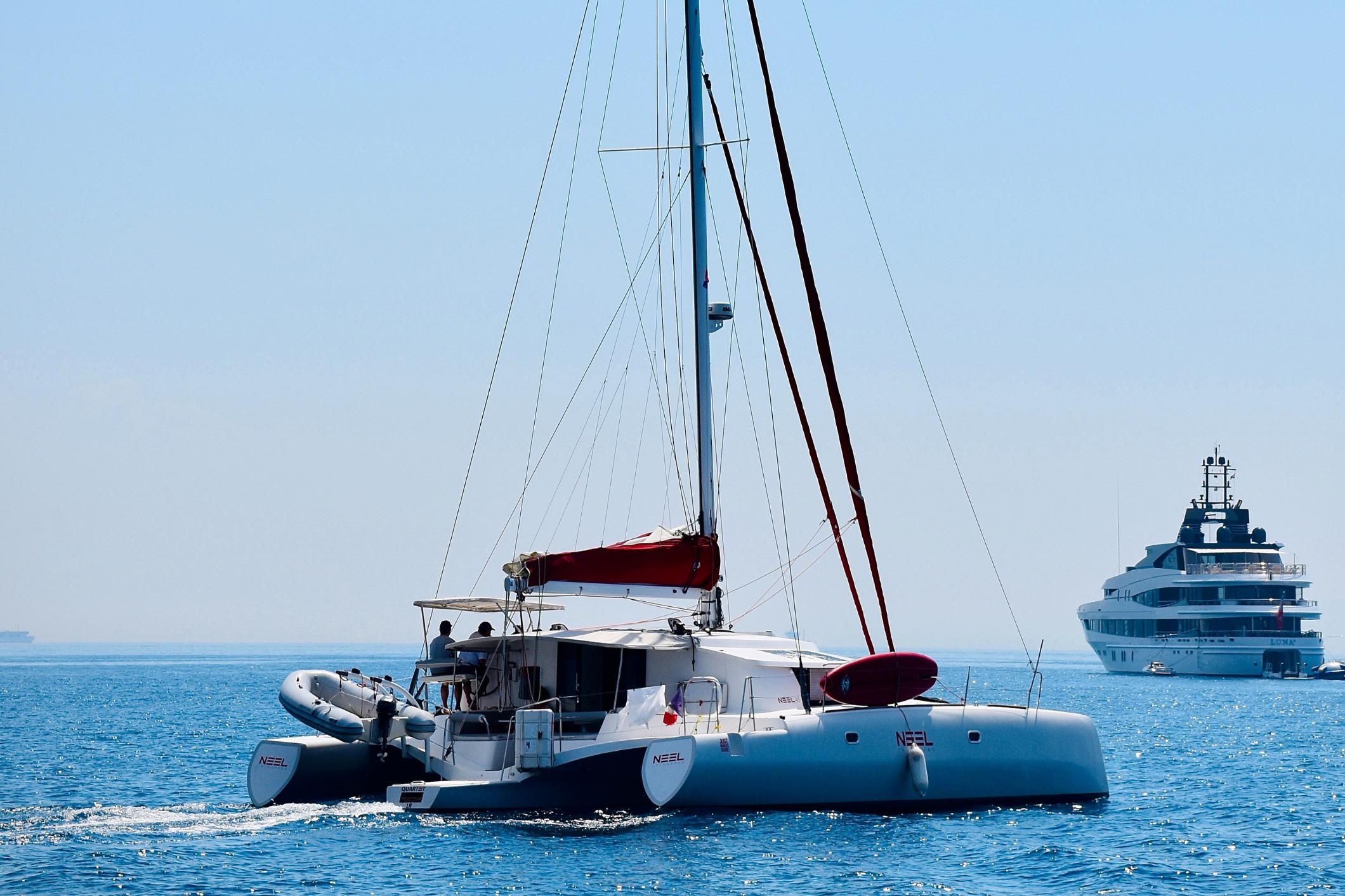
Backstage of a Neel 43’s delivery: the captivating story of Benoît, pro skipper
Benoît C., professional skipper and regular user of the Capt’n Boat platform, delivered a Neel 43 trimaran from La Rochelle to Pula in Croatia.
He shares his daily experiences with us through his logbook.
Benoit tells us all about the delivery trip, from the preparations ahead of the mission to the weather analysis and the route chosen. 👇
The boat delivery mission
Benoît and his first mate’s mission for this delivery was to get a new Neel 43 to Croatia within the allotted time.
This task required a high degree of professionalism and a precise technique for maneuvering a boat of this volume. The aim, of course, was to deliver a boat that was as new as possible, despite a crossing lasting several days.
Trimaran Yacht Charter contacted Capt’n Boat to find a sufficiently experienced crew for this delivery operation.
Benoît, a professional skipper since 2006, answered the call. With 3 transatlantic races under his belt, plenty of sailing in the Mediterranean and a good knowledge of 60-foot catamarans, Benoît was the ideal candidate.
Before departure
“It’s Monday 13 March 2023, and I’m on my way to the shipyard in La Rochelle, the port of departure for the delivery trip. I meet up with Emmanuelle from Trimaran Yacht Charter, and Louis, a salesman from the Neel yard, who give me a general presentation of the boat and its equipment: spacious engine room, clear, well-organised and identified electrical, water and fuel systems… a captain’s dream!
We took advantage of a lull to fill up with diesel and get to grips with the boat for the first time: a Neel 43.
Although the size and volume of the boat may give the impression of a lot of dunnage¹, the 50hp Volvo Penta engine and bow thruster make maneuvering smooth and easy.
Provisioning is complete: the fridge can take on board a fortnight’s worth of fresh and frozen food. I decide not to bother with water packs, thanks to the aluminium water tank on board.
Tuesday 14th March: Arrival of Johan, my second in command for this delivery trip; a sailor with whom I’ve already done a return transatlantic just under a year ago. I let Johan get to know the boat and familiarise himself with everything; then I prepared the boat, fitted out the equipment on board, prepared the route and studied the weather.
We decided to set off on the morning of Wednesday 15th March with a favorable tidal current and calmer winds and seas, which will be more conducive to getting to grips with a new boat than today’s conditions, which are a little rough in the Bay of Biscay.”
The delivery from La Rochelle to Pula
1. La Rochelle - Porto de Cariño
“We cast off at 10am on Wednesday March 15, bound for Porto de Cariño in Spain. This first stage will take us about 320 Nm to Friday March 17 at 9am.
Windward beam, high mainsail and large genoa, in a 3 to 4 on the Beaufort ² (BF) scale: light and pleasant breeze, with a few gusts to 5… ideal conditions for getting to grips with the Neel 43. A sea level of 3 on the Douglas scale³ (DGL): not very rough, giving a perfect bottom speed of 7 knots. As the 5-hour watches progressed, the wind and seas decreased until the engine had to be started at 10am on Thursday March 16.
With 2000 rpm and a residual wind we reach a speed of 6.5 knots.
At the level of Gijón (Spain), the south-westerly wind takes over, allowing us to stop the engine, then as the watches go by we become familiar with reefing⁴. The use of the staysail⁵ allows a very honorable upwind for a multihull with a speed of 9 to 10 knots in seas not yet lifted, and in a 5 to 6 BF, under mainsail 2 reefs and staysail.
At 9am, the same wind closes the door on La Coruña, and we anchor in the Cariño roadstead to wait for a more favorable breeze and round to Fisterra (When delivering a new boat, you don’t force it!).”
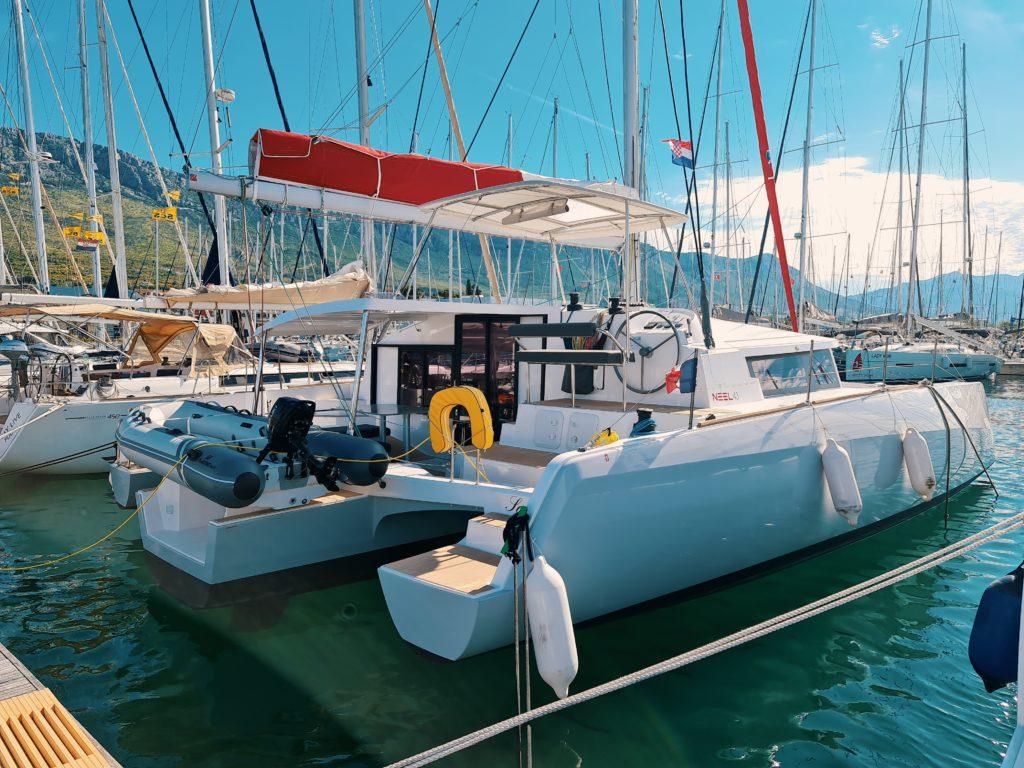
Strategic navigation choices for a boat delivery operation
🤓 Why use the engine so often and strictly adhere to the instructions for reducing wingspan?
The engine is often used during boat deliveries for a simple reason: we’re delivering a boat, not sightseeing. So, of course, we hoist the sails if it allows us to go in the right direction and at the right speed; otherwise, the use of the engine is not taboo.
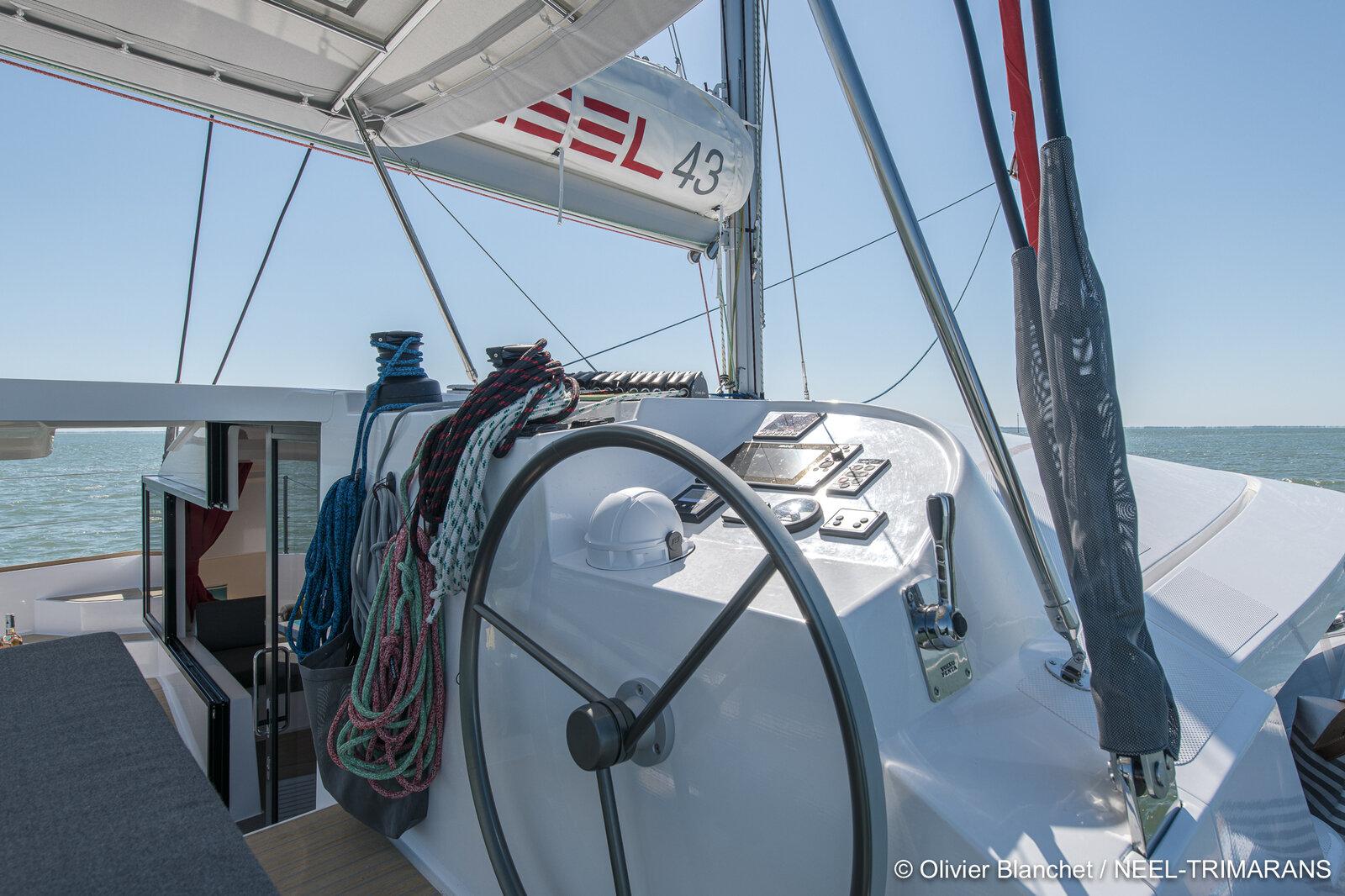
As far as sail reduction is concerned, we’re talking here about a multihull whose sail don’t disappear under the gusts of wind. If you don’t want to put unnecessary strain on the boat’s rigging and structure, in order to deliver a boat that’s as new as possible, it’s imperative to comply with the shipyard’s recommendations.
2. From Cariño Harbour to Port of Péniche
“We set off again on Saturday March 18th at 9am for the Port of Péniche in Portugal, a distance of around 300 Nm.
Mainsail 1 reef, genoa 80% in a 4 to 5 on the Beaufort scale and a wind gusting to a 6 W / NW allow us a (very) tight close-hauled passage, which I help with an engine at 1800 rpm all the way to Cabo Prior.
We then have to pass Muxia and Fisterra as quickly as possible to avoid having to motor down the whole Iberian Peninsula in the dead calm⁶. Despite our efforts and prayers, the wind starts to drop off Vigo and the calm descends on us off Porto. The engine takes over, first in support, then solo…
The stop at Péniche was not planned, but I always have a very relative confidence in fuel tanks, even if they are electronic and new. So we stopped at the station for a full tank (€1.658/liter). This allows me to calculate an average consumption of less than 3.4 liters / hour, and to note that the tanks are very pessimistic; two useful pieces of information for the next stage of operations.
Immediate departure for Cascais.”
3. Péniche - Cascais
“Monday March 20 from 9am to 5pm, we cover about 45 Nm from Péniche to Cascais (Portugal).
What a pleasure! We tease each other with a few sailboats and a catamaran, then reluctantly dock in front of the dykes. But the stop in Cascais is compulsory for the first engine overhaul (Wavetech does Yamaha and Volvo). What a shame! The breeze was perfect…»
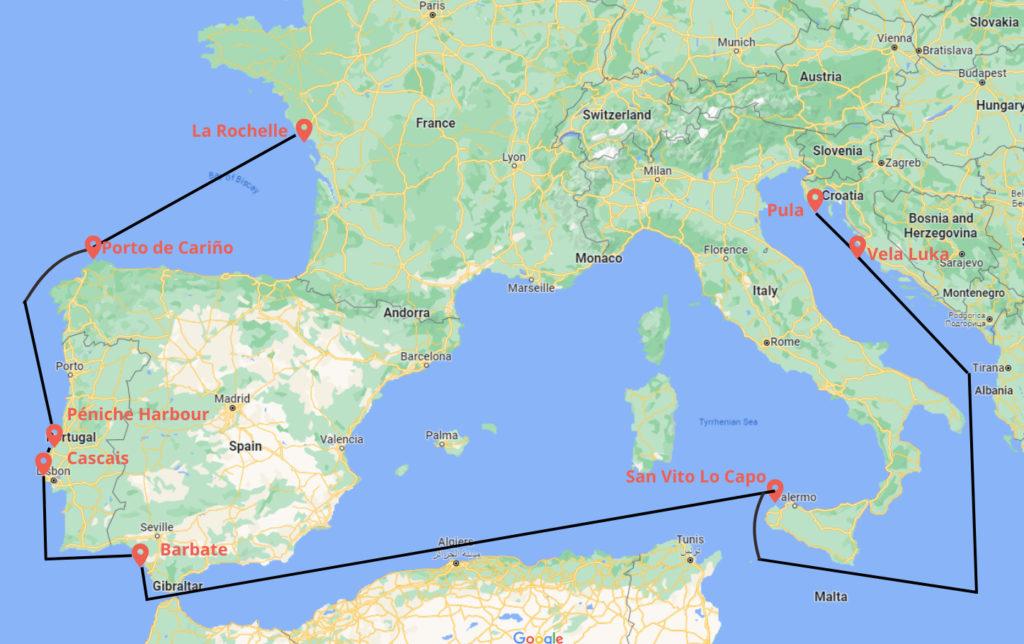
4. Cascais - Barbate
“From Tuesday March 21st 1pm to Thursday March 23rd 4am, we cut around 27 Nm from Cascais (Portugal) to Barbate (Spain). A good breeze, followed by a fresh breeze and a light to moderate seas, enabled us to make watches of 30 to 40 Nm.
At 7pm we pass Sines and at 5am Vila do Bispo, then it’s straight on to Barbate, but the wind and sea are falling, so we’re forced to use the engine at 1800 rpm. We arrive at 5am in a rather ugly fishing port where a kindly fisherman points out the fuel dock where we’ll wait for it to open (8am and 1,66€), allowing me to see that at 1800 rpm le little 50hp engine is content with 3 L/h, a third piece of useful information.
Anchorage in the sand in front of the port and … we wait.”
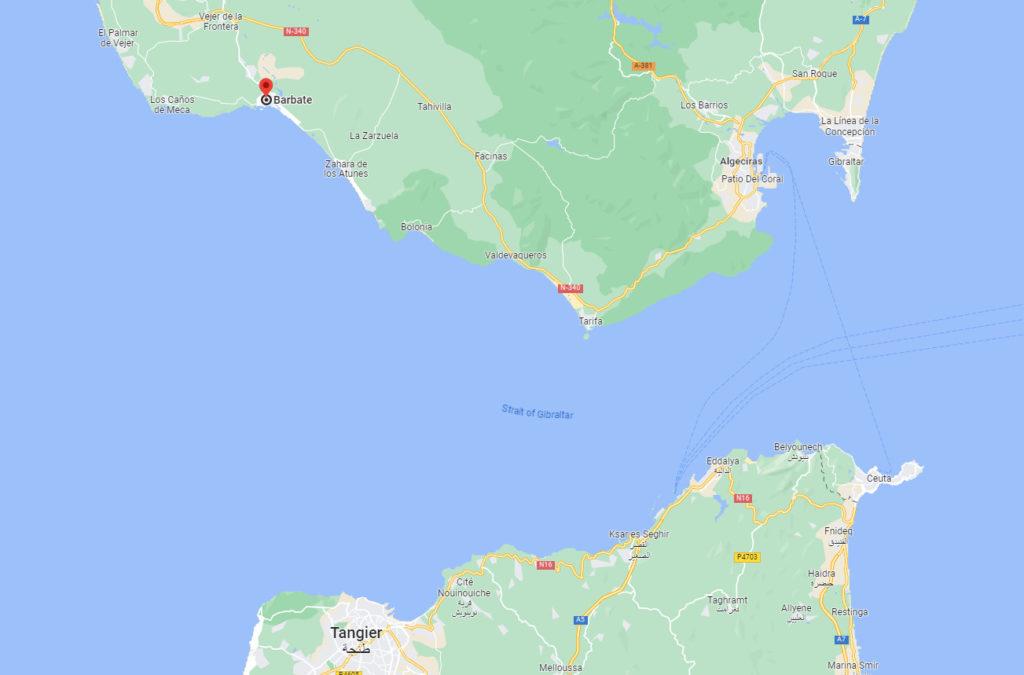
Why wait in Barbate before crossing the Strait of Gibraltar?
Waiting, because ahead of us lies Gibraltar.
Gibraltar is very simple, there are only two rules for small boats (everyone knows, when you write the check, the boat is big, but when you pass Gib’, it is small … 😉):
- You can only pass with the tidal current,
- We only go with the wind, otherwise we wait.
On the other hand, since the lockdown and almost total absence of traffic for several months, a small herd of orcas has chosen the area as their home! However, the young members of this charming pod have got into the habit of playing with the rudders of small boats… except that few rudders can resist them…
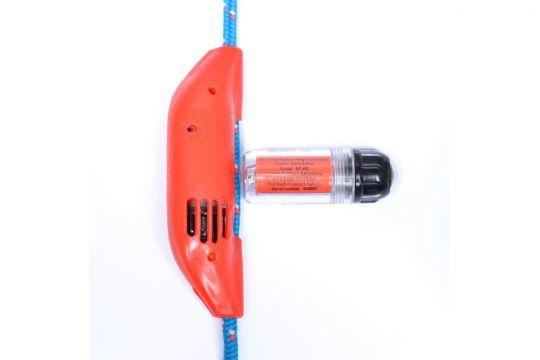
To avoid having to pay for towing and repairs, you can launch one of the devices that fishermen use to keep marine mammals away from their nets: a Pinger. These devices are on sale at all fishermen’s cooperatives and at certain Shipchandlers (including Pochon). They are simply harmless sound repellents with a range limited to a dozen meters.
5. Barbate - San Vito
Crossing Barbate (Portugal) – San Vito (Sicily) from Thursday March 23 1pm to Wednesday March 29 3pm ~950 Nm.
Departing at 1:20pm for full sea at 4:20pm and a passage of the rock of Gibraltar scheduled at 7:20pm, we set off under engine with a light residual easterly wind and a remnant of contrary current, both of which disappeared fairly quickly. We pass Tarifa at 4:20pm (no orcas in sight, is it the Pinger or luck?).
Thanks to a 3 to 4 on the Beaufort scale wind, and a better-than-expected current, we passed the rock of Gibraltar at 6:30pm.
Having filled up in Barbate means we don’t have to waste half a day fetching fuel in Gibraltar, especially as it’s no longer tax-free there.
We tack from largues⁷ into the current and pass Cabo de Gata near Almeria on Friday at 4pm. I choose to sail along the Spanish coast as far as Cartagena, so I can load up on one last bit of weather before the crossing to Sardinia. On the other hand, climbing a little to the north puts us on a route that will be well oriented to take full advantage of the end of the Mistral and Tramontane winds in the Gulf of Lion. A winning bet!
With the exception of Saturday 25th between 1am and 9pm, when we were pushed along in a light breeze (1 to 2 on the Beaufort scale), we sailed comfortably with a northerly wind of between 3 and 7 BF and a 3/4 astern sea: what a pleasure! From 5 BF upwards, the staysail replaces the genoa and perfectly balances the 1 or 2 reefs of the mainsail.
My teammate and I (who are familiar with cruising multihulls) are unanimous: the NEEL 43 far exceeds our expectations and lives up to all its promises!
On Tuesday March 28, in a sluggish breeze, we skirted southern Sardinia to refresh the weather files and continued on to Sicily. We soon picked up the wind again in the Tyrrhenian Sea, arriving in the marina of Capo San Vito at 3pm on Wednesday March 29.
Here we carry out the triptych: fuel, refuelling and rest (plus hull, bottom, engine, rigging… checks).
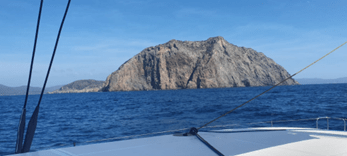
6. San Vito - Luka
From Thursday March 30 at 10am to Monday April 3rd 2pm, we covered ~580 Nm from San Vito in Sicily to Vela Luka in Croatia.
We left San Vito in a very light to light breeze with all sails up and the engine running at 1800 rpm, and we won’t be able to turn it off until the exit of the Strait of Messine Friday evening, the 31st. In Ionian Sea, skirting the sole of the Italian boot, we cross a few lanes where a fresh, if not very fresh, wind forces us to bow⁸.
We’re crossing the Adriatic quickly, to be as close as possible to the Croatian coast before the onset of the Bora episode (downwash from the northeast) forecast for Monday morning. We’re just off Dubrovnik when the Bora kicks in. We skirt the islands as closely as possible to avoid the breaking seas in a 6 to 7 BF. As we skirt the island of Kurcula, the wind picks up to a 7 to 8 BF, so I keep only the staysail and at 2pm, decide to take shelter in the marina of Vela Luka and wait for more favorable conditions.
Fishing: the best way to get protein
For amateurs, fishing is the ideal way to feed on fresh protein on board, and for the pleasure of the hobby too!
You only fish what you eat, and you reel in your line at night or if the speed is too high to reel in your catch safely.
Trolling remains the simplest technique, but is only possible at reduced speed (3 knots).

7. Vela Luka - Pula: the final stretch
We set off on Tuesday April 4 at 11am, heading for the port of arrival: Pula in Croatia, 180 Nm from Vela Luka; where we arrived the next morning, Wednesday April 5 at 10am.
We leave Vela Luka in a fresh wind (6 BF). We have fun teasing a few sailboats following the same route as us as far as Stupin, then we continue single-handed to the Unije channel. In less than 24 hours, we will go from a 7 BF wind to a flat calm several times… apart from the 4 degrees temperature, it reminds me of my native Tramontane.
I decided to head up the Unije channel, to cross the last wind corridor on the beam, thus reducing the apparent wind the rig will have to endure. For the first time, the pilot is a little overwhelmed by the sea state and we steer all the way to Pula.
At the end of the Verdura marina, gusts still reach 25 knots, but with the help of the bow thruster, the docking goes off without a hitch. Paolo, base manager of Trimaran Yacht Charter, gives us a warm welcome and opts to let us take a breather and desalinate the boat before making his inspection visit. Once the boat has been inspected, I contact Emmanuelle from Trimaran Yacht Charter to inform her of the end of our mission.
In need of a boat delivery ?
Whether it is for a boat delivery, a move to a construction site or a new sailing area, call on a Capt’n Boat crew to deliver your boat by sea!
👉 Create for free an ad on Capt’n Boat: we’ll suggest profiles of experienced sailors to carry out the delivery (like Benoît 😉)!
² Beaufort scale: scale for measuring wind speed over a ten-minute period, containing 13 degrees.
³ Douglas scale: expresses the sea state based on the height of the wind sea, or on the height of the swell. It is used to indicate the total sea (wind sea + swell).
⁴ Reefing: consists in reducing the surface area of a sail by partially folding it in order to adapt the sail to the force of the wind.
⁵ Staysail: jib closest to the foremast.
⁶ Deam calm: means a sea of oil, when there's not a breath of wind.
⁷ Tacking or weaving: zig-zag to maintain course in headwinds.
⁸ To bow: reduce sail area by reefing.
 CaptnBoat.com
CaptnBoat.com